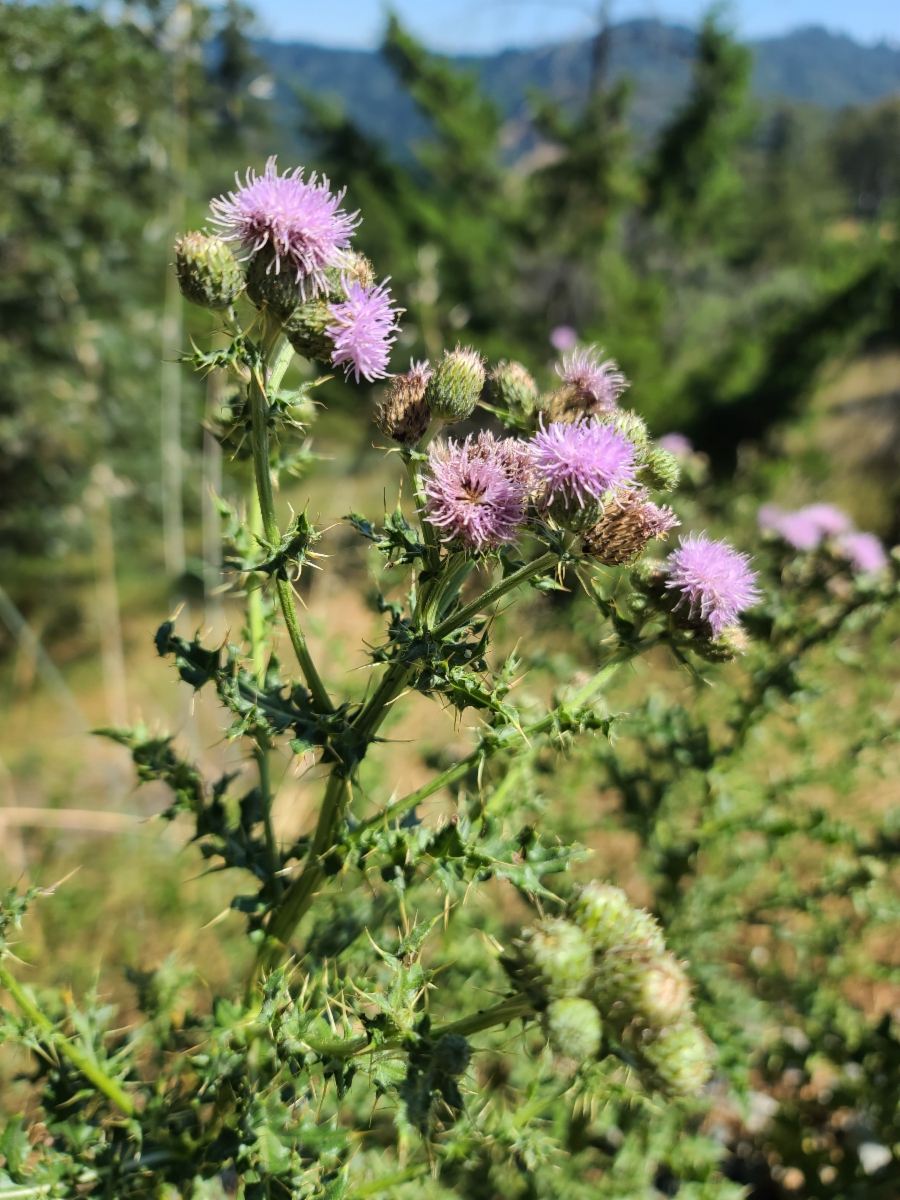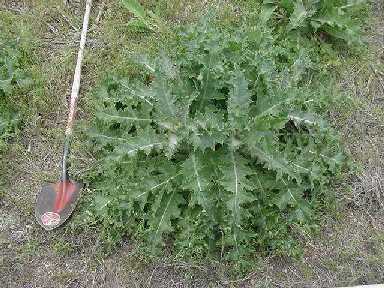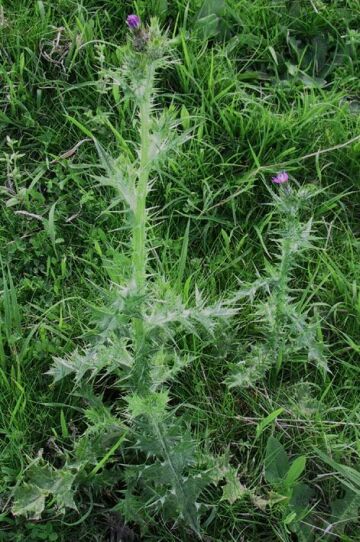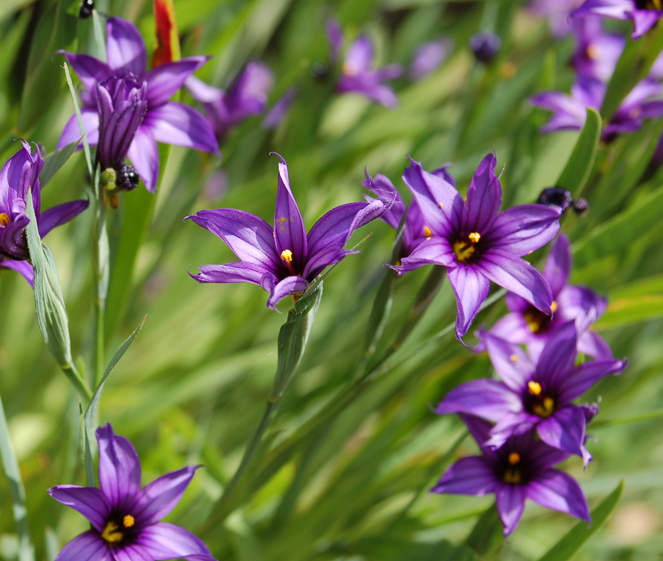Introduced species: Thistles–“Canada” and bull thistle (Circium arvense and C. vulgare), Italian and Scotch thistles (Carduus pycnocephalus and Onopordum acanthium)
Characteristics: Thistles are members of the sunflower (aster) family. Canada (or creeping–this species is not native to Canada, so this epithet is misleading) thistle is a clonal perennial; bull thistle may be an annual, biennial, or short-lived monocarpic perennial (living multiple years, but dying after flowering/seeding). These are the two most common thistles in northwest Oregon. Both Scotch and Italian thistles may behave as annuals, though Scotch thistle is more often a biennial (forming a first-year rosette, then flowering in the second year); these are known mostly from other parts of the state. Creeping and bull thistle typically reach heights of up to 5 ft (1.5 m); leaves on creeping thistle are 6-8 in (15-20 cm) long, while those of bull thistle may be up to a foot long (30 cm). Scotch thistle may achieve heights up to 8 ft (2.5 m), with a spread of 6 ft (2 m); leaves are up to 2 ft (60 cm) long by 1 ft (30 cm) wide, with sharp yellow spikes. Italian thistle is slightly smaller in all respects. Italian thistle’s few, small, cylindrical flower heads distinguish it from other thistles; Scotch thistle has prominent “wings” along its stems, with flower heads up to 2 in (5 cm) wide. Flowers appear in mid-summer, giving way to large numbers of seeds (up to 40,000 per plant for Scotch thistle).
Spread: Both Italian and Scotch thistle reproduce entirely by seed. Their large seed production and high germination rate allow them to colonize and spread rapidly in disturbed sites, pastures, and along waterways. Both species are native to Europe. Scotch thistle is located primarily east of the Cascades in Oregon and Washington, with a few infestations in western counties; Italian thistle is a major pest along the California coast, and is present in several counties in southwest Oregon. Creeping and bull thistle, by contrast, are both common in the Pacific northwest (and, indeed, throughout much of the world), having expanded their range greatly from their native Europe (where they are also sometimes considered noxious!). Bull thistle reproduces solely by seed, while Canada thistle can also reproduce clonally, sending new shoots up from thickened roots as they grow outward from the parent plant. While these two species can be a nuisance, they do provide a variety of habitat benefits for birds (edible seeds, nest material, etc.).
Control: Digging or tilling will kill Scotch, Italian, and bull thistles, assuming this is done just prior to or shortly after the emergence of flowers; cutting plants just below ground level is also effective. Repeated cutting can eventually exhaust creeping thistle, though this is a long-term proposition for a well-established population; large infestations may require herbicide use. Healthy vegetative cover dramatically reduces the chance of any of these species intruding on an area. It is very important, at minimum, to remove seed heads before they mature. First, though, make sure you’re dealing with an introduced thistle species; there are no fewer than four thistles native to western Oregon, which provide important habitat for birds and other fauna. The Clackamas Soil and Water Conservation District’s WeedWise website has a great write-up on native vs non-native thistles in our area.
Native Replacements: Blue-eyed grass (Sisyrinchium bellum) is a pretty native wildflower that will do well in habitats occupied by thistles. Or, if you don’t mind stickly-prickly, you could try an appropriate native thistle (see the link above)!




